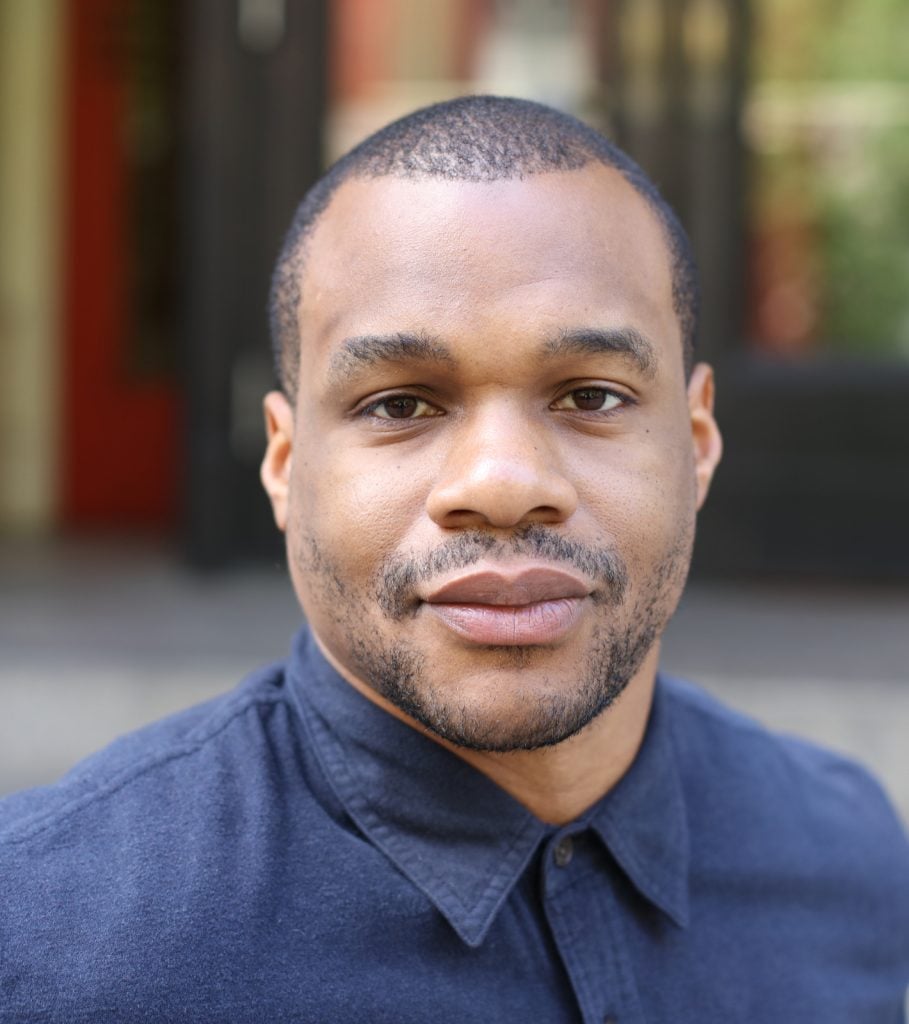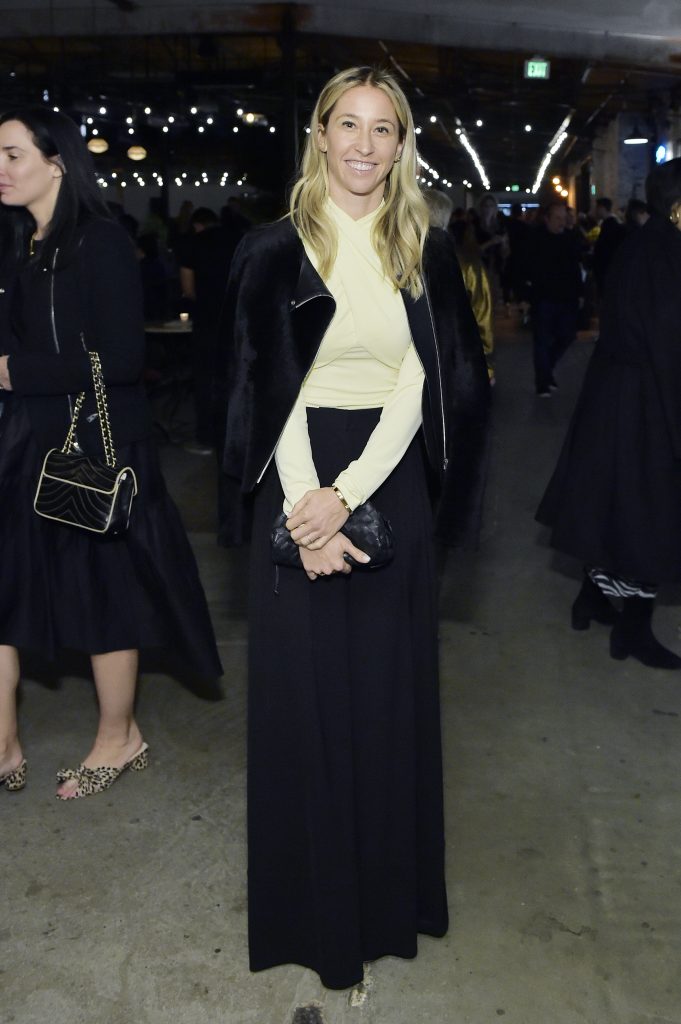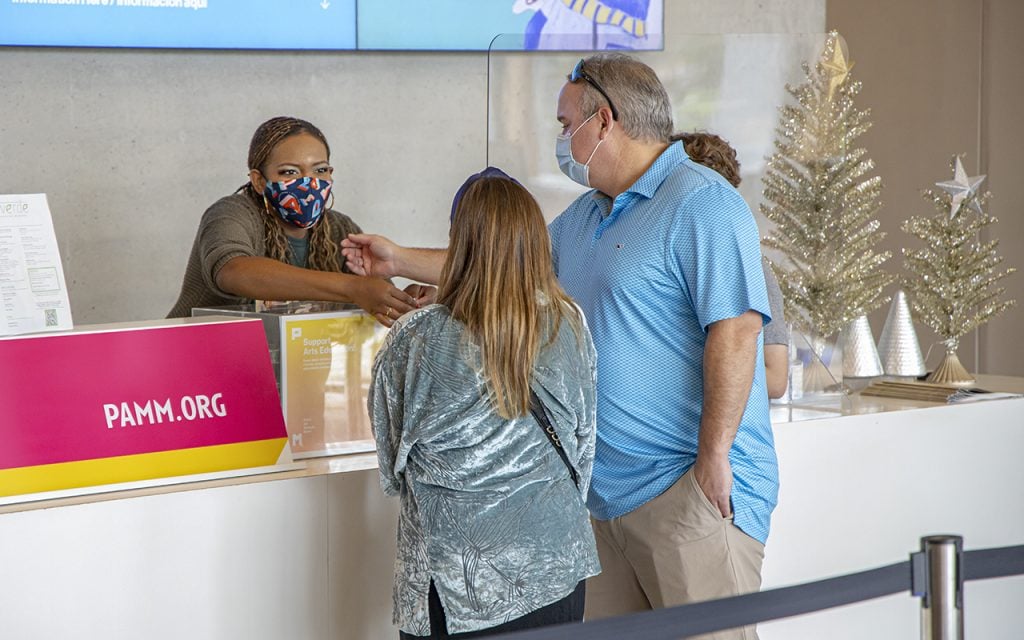Art World
An Art Advisor, an Art Handler, and Other Cultural Workers Reflect on How Their Professional Lives Changed in 2020
Art-world jobs looked very different this year.

Art-world jobs looked very different this year.

Artnet News

Like every other industry on earth, the art world was rocked hard by the difficulties that kept piling up during this most unusual 2020. It’s hard to think of a year when so much has changed in the span of just a few months.
To understand how different sectors of the art world adapted to the new reality, we reached out to four figures with different career paths in the arts to find out what was different about 2020, how their daily routine has been upended, and whether things can ever go back to the way they were before.

Noel W. Anderson. Courtesy of the artist.
Obviously, the change was from in-person to on-screen teaching. It’s hard to teach students to be physical when you can’t be physical yourself.
My teaching is studio- and text-based. This year allowed me to re-invest in my own process and then figure out how to translate that to teaching.
I can go months without making anything. I read. I watch movies. I do intake. So I had to teach them how to be researchers. Then I realized I had to allow them a space to realize their own importance. My students were freaking out, and people were asking why I was so calm. I said, “We beat slavery, we’ll beat this.” We all come from histories that embed trauma in us, and we are manifestations of winning over the trauma. If you understand that, you are something.
My first assignment was a lecture on “the historical being”: tell us who you are and where you’re from. They said, “Am I supposed to talk about my grandparents and my parents and who they were?” I said, “You could talk about them. Your grandparents survived wars. Or you could talk about what music you’re into, and I can talk to you about what social movements that music was connected to.”
It gave them coordinates in time to understand themselves. It gave them a voice and showed them that their voice has value. The world produces people, from the janitor to the president, who think their voice is not important unless it’s loud. I tell my students that their voice is as important as the president’s. It’s just not as loud.
The work my students produced, even without consistent access to a print lab, was just remarkable. This is the proudest I’ve felt in a long time.
My parting lecture turned into me saying, “You all survived a pandemic. You survived remote instruction. You’re surviving Trump. If you don’t think you’re historical beings, I don’t know what the f*ck you are. You can go to your grandparents and draw from their experience, but you can draw from your own. And someone, one day, will draw from yours.”

Meredith Darrow. (Photo by Stefanie Keenan/Getty Images for Hauser & Wirth x MATCHESFASHION)
Pre-lockdown, my day to day consisted of regularly running around to see clients and visiting with the galleries and dealers I work with. The most startling change was going from a world where it was my job to run around and see people and art to sitting at my desk all day, and accepting seeing shows and people via the internet and Zoom.
I really miss the in-person interactions that I think are such a crucial aspect to my work. Collecting art is so personal, and I am able to engage with my clients and their tastes in person in a way that is strained trying to do over the phone and computer. The connections and friendships I’ve built in the art world are what I love the most about what I do, and I’m really looking forward to re-engaging in person.
I do think the lack of travel and art fairs has made me realize how productive I can be by basically locking myself in a room with nowhere to go. I intend to pare down my engagements moving forward to maintain the sense of focus and work ethic that I’ve come to embrace, and has frankly made me better at my job.
Much to, I think, everyone’s surprise, the art market had a banner year considering the state of the world. Now more than ever, people with the means are turning to art collecting for not only a tangible investment but also to engage in contemporary culture in a fulfilling way. I believe the need for smart art advisors has grown as a result of the pandemic as burgeoning collectors are spending time at home and care about what’s on walls that they’re staring at a lot more these days!

Art Handler magazine founder Clynton Lowry. Photo by Maayan Strauss
The last two months of 2019 I began working part-time at [New York gallery] Salon 94. They hired me to be their “freelance art handler” every Thursday and Friday. I was doing condition reports in a tiny storage space inside an art warehouse near the Brooklyn-Queens Expressway. I worked there right up until the stay-at-home order.
The warehouse had a crew of guys who were in a metal band who the owner had assigned to more or less run the place. They looked like some Bushwick version of Duck Dynasty. They perfected that art-handler aura of barely visible disdain for the artwork and obsessive focus on the task. It was just a means to an end, enough money for beer and rent and maybe gas money to go on tour, which was the same for me, except I had no car, no band, and no plans of going anywhere.
We would send emails, take images of the artwork, select the condition status, and write any issues into a readymade digital form. If anything was missing or if the Duck Dynasty guys said it had already shipped (or was otherwise unavailable), we had to let the gallery know right away.
In terms of the whole field, there were massive furloughs [after March]. Some workers were being forced to choose between heading into work and getting sick or staying home and not being able to earn money to pay rent.
Personally, I gessoed some panels for Arthur Jafa recently. Besides that, I’ve just been working on the magazine Art Handler and redesigning the jobs.art site.
As an entity with a focused audience of art workers, Art Handler decided that a survey could be our contribution in the early stages of this crisis. The biggest takeaway was that compared to salaried employees, freelancers were hit the hardest, which should have been a huge wake-up call.
I think the shift to online is showing us the cultural potential of other behind-the-scenes perspectives, outside of this long-established dichotomy of artist and audience. Groups like @changethemuseum and For the Culture, who call out systemic racism in the workplace, benefit from the grassroots nature of these platforms and are aimed at not just returning to the status quo.
Things like Artist Relief and the New York Foundation for the Arts grant for non-salaried workers were great endeavors, but as much as I would love to see those in power go out on a limb and advocate/guarantee higher pay and benefits for the people working for them in the long-term, I know I’m dreaming.
We’ve got to put a stop to doing favors for billionaires—we don’t need a Koch Plaza at the Met. These people are part of a culture where nobody says “no” to them, and that needs to change. We also have to fix freelance misclassification. Calling freelancers independent contractors is a mechanism that guarantees industry-wide peril by yanking out the safety net from under us. And no more unpaid internships. We’re doing what we can to stop this practice with jobs.art where we have a “no internships” policy—everything posted on our site must be for paid work.
But, you know something that won’t go away? Art Handler! So donate to our Fractured Atlas.

Queena Washington, visitor services manager, interacts with guests at the Pérez Art Museum Miami. Photo courtesy of the Pérez Art Museum Miami.
Before lockdown at PAMM, you could have a true, genuine human interaction with a guest one-on-one. You were able to greet them with a smile. You knew that our community would be able to come out and enjoy the art at the museum, and that the artists and exhibitions we showcase would mirror the different cultural backgrounds in our community.
When the museum announced it was closing its doors, I was worried about the staff and their safety. I made sure that we answered all of their questions and made it a priority to be supportive during the closing. I myself was not furloughed, however my team and other teams were. We worked hard to ensure that they would come back to a safe and healthy work environment, and that our processes followed the CDC guidelines on PPE and safety. I am grateful that the museum was able to bring back all furloughed staff who wished to return, and to be working with my team again.
I did not have any major concerns going back to work. I believed in the planning and processes we set in place with HR. I was confident that PAMM took time to make sure everyone was safe coming in and out of the building. Ensuring the safety of the team and guests was key for me.
The new normal includes plexiglass for the front desk for social distancing, PAMM-branded masks (it’s now a part of the uniform!), and sanitizer stations located throughout the museum. The biggest change is that we are not in the museum every day.
Overall, I have not allowed the situation to affect my ability to do my job. I have worked hard on being positive. One thing I have learned is how to use technology like Zoom and Teams video for the first time.
I’ve taught my team how to engage with each other and the guests in new ways. We also started online ticketing, which is a new way to control social distance and the flow in the museum. In a perfect world, I would love to go back to see everyone’s faces, and greet them with a smile. I hope that all theaters and museums can reopen again safely soon, so that everyone can enjoy the beauty and joy of all art forms.